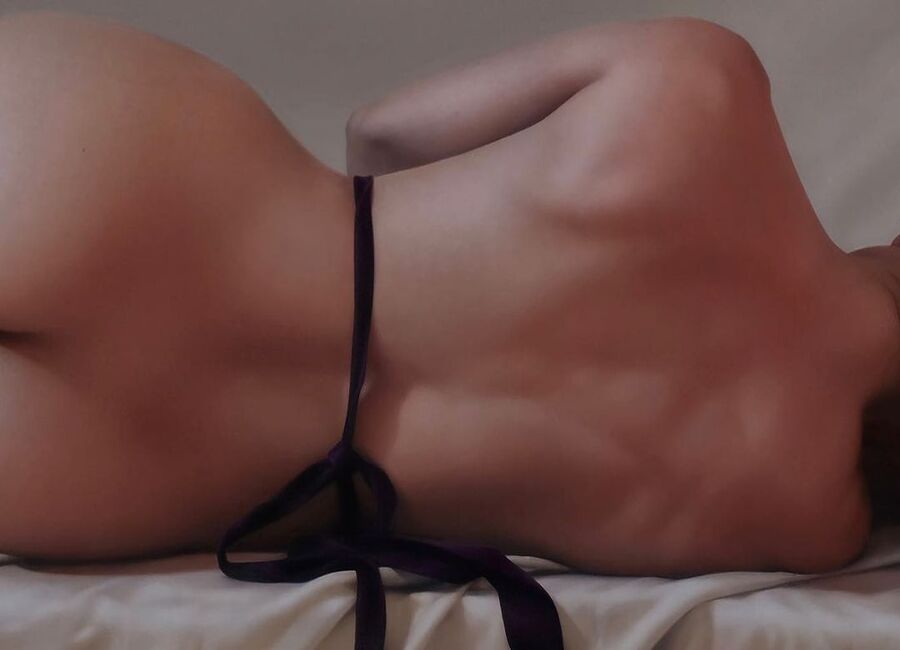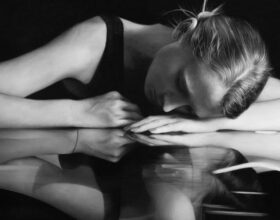The story of Megan Elizabeth Read’s Requiem is a very personal one. It is the story of an exhausted artist longing for a slower pace. The story of a human being, trying to reconnect with their artistic practice without the constraint of a schedule or the looming fear of not insufficient productivity. Indeed, the qualities required of contemporary artists are exactly those that capitalism as an economic structure, now demands of its employees: forced creativity and mobility, mandatory flexibility, a taste for risk and novelty often at the cost of one’s own artistic practice and personal timetable. Oftentimes, artists feel pressured into creating fast, promoting at breakneck speed and competing with other artists in ways that can alienate them from their own sense of self.
The story of Megan Elizabeth Read’s Requiem is also the story of change: the perpetual questioning and introspectiveness of a person willing to embrace change as unexpected and puzzling as it can often be. It is true that artistic creation would not be so profoundly stimulating and desirable if the individual did not learn through the possibilities they invent and the choices they make – to know and to discover themselves as one and multiple.
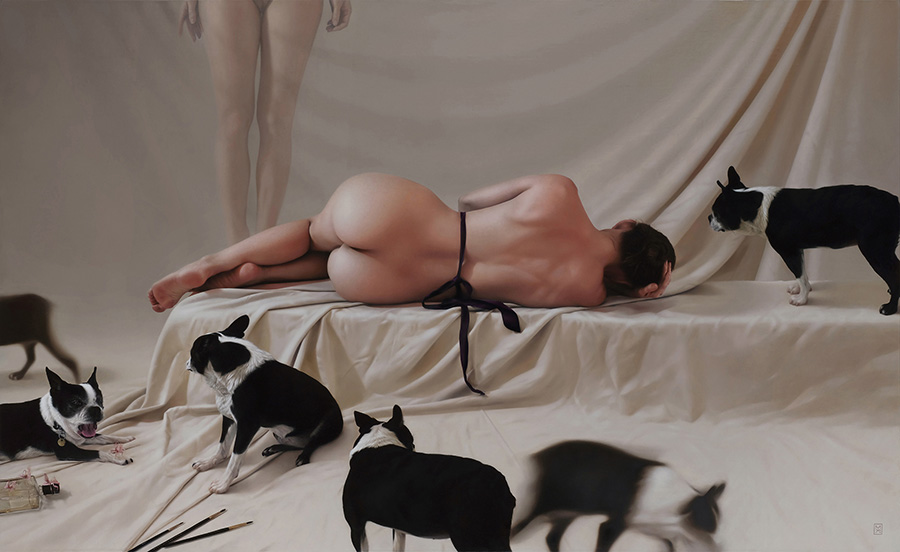
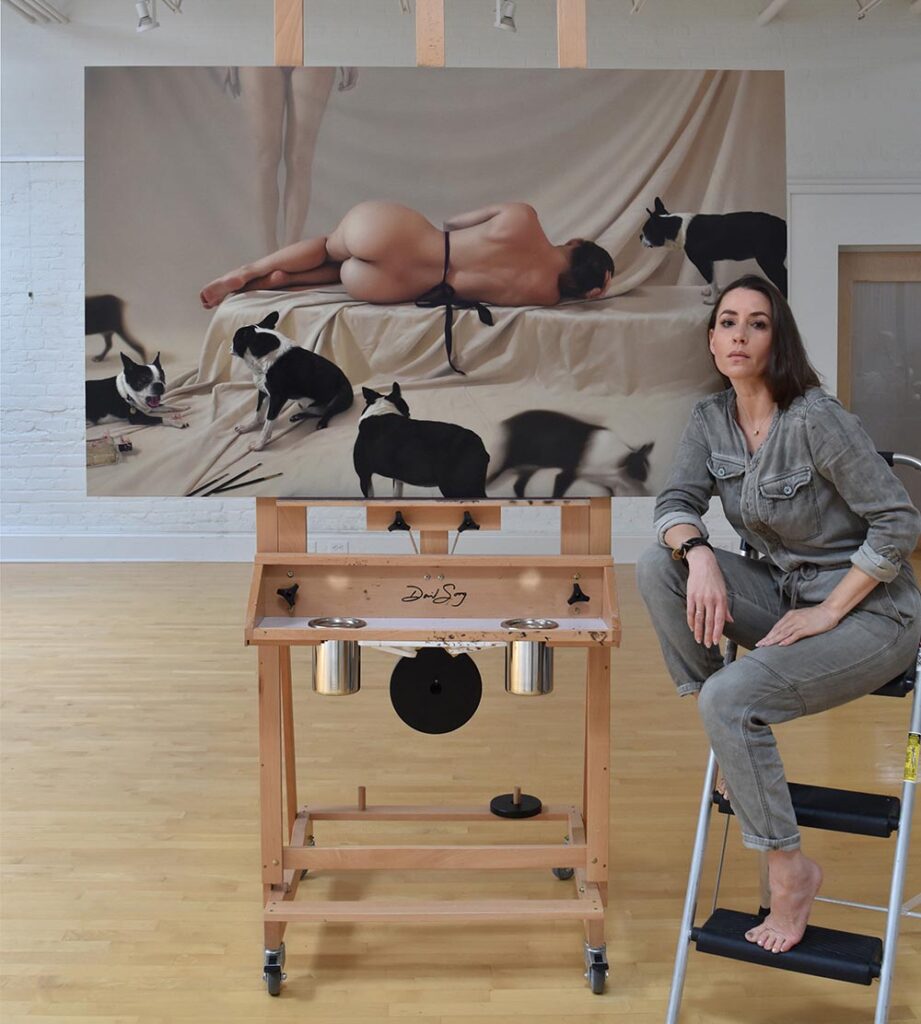
For me, the less that’s going on in a painting
the trickier it is to paint. Simplicity can be deceptive.
Exclusive Interview with Megan Elizabeth Read
Tell us about the genesis of the conception of your painting Requiem. Where did you draw inspiration from?
Well, last fall, after years of working at an unreasonable pace (at least for me), my body and mind finally just hit a wall and everything had to stop. I didn’t paint for a while and all that was left after the storm was a deep exhaustion, sadness, and a need to hibernate. And then there was this little creature, my little one-eyed Boston Terrier, Ella, still hovering around me. Still needing care and food and to be kept alive. Connecting me to the world and growing sicker and sicker with age.
So, in all honesty, this painting sort of came about because at the time it was really the only thing that I could imagine or paint. I wanted to just capture the moment we were in and this state of pausing and transition and exhaustion and her presence in every corner of my life, both the good and the bad. This was where we were when I began planning but by the time I began the actual painting she had died and my life was having to reform into new shapes and patterns. The final painting became a way for me to talk about that process and the need to abandon my past way of moving through the world and start over, but also a way to thank her for her company and process that transition.
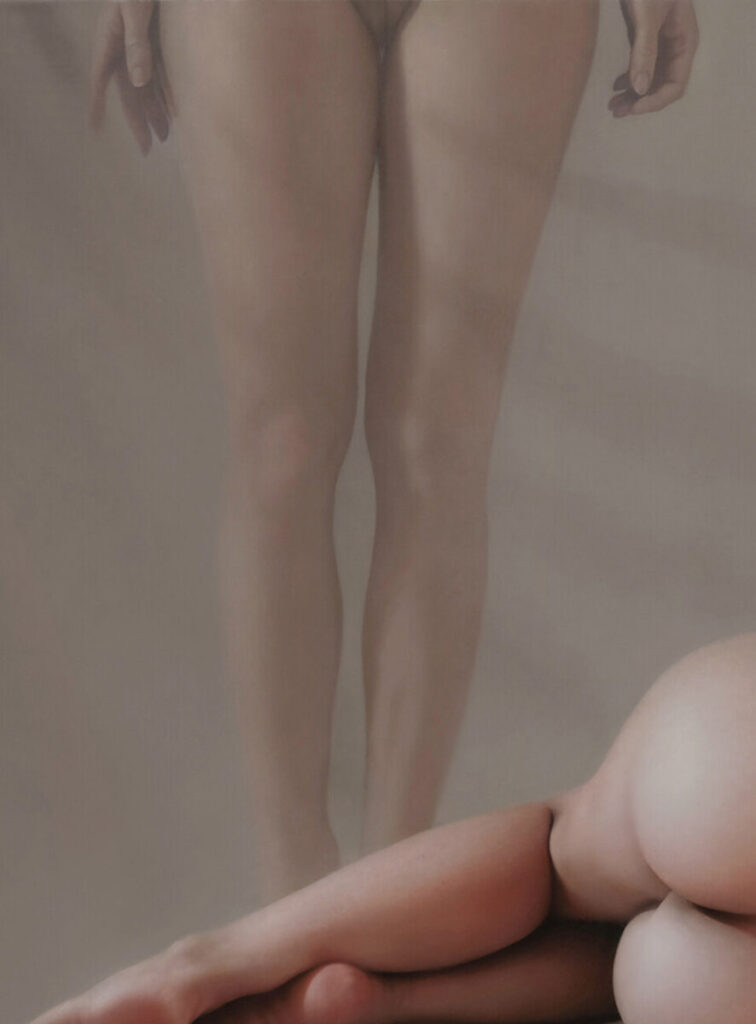
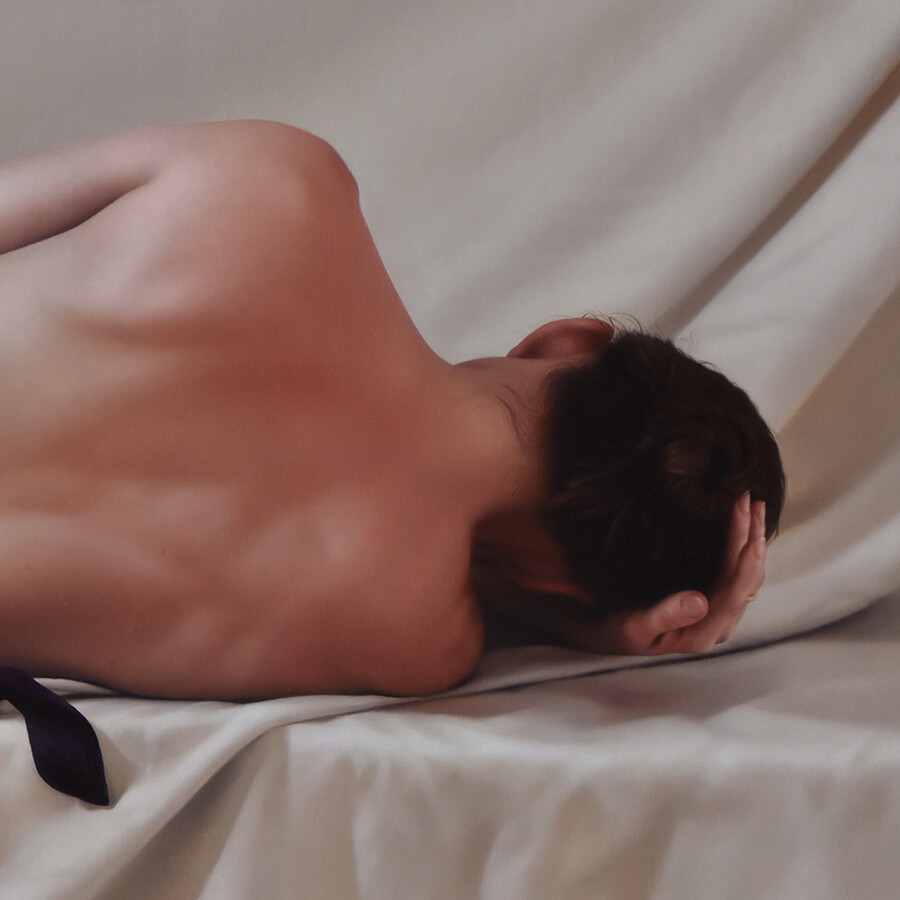
Walk us through your entire process for Requiem: from conceptualization to completion? How long did it take? What are the challenges that you faced?
I had a vague image in my head and began by just creating our little stage and draping it with
the fabric – I wanted it to feel of this world, but also… not. A real place for us to exist, but also like a quiet, expansive cocoon. It was simply bits of my studio piled together. A crate. An old drop cloth. Next I took lots of photos of Ella there. Some with my phone. Some with my Nikon. Some with a slow shutter speed to capture her movements.
Finally I climbed in myself, with no idea if I was in the shot or in focus, and snapped a few photos. I ended up using the first image I took as a reference, which felt the most honest. And there we were. I then created a study on raw linen to work through things compositionally, which was much less stressful than a fully fleshed out painting. After Ella’s death I began on the real painting and spent about two months on it early in 2023.
Most of the challenges were technical of course. For me, the less that’s going on in a painting
the trickier it is to paint. Simplicity can be deceptive. In complex paintings you actually have much more flexibility but when every bit fades into or smoothly connects with the rest, it is so much more important that every transition be as perfect as possible and requires a lot of strategizing.



In Requiem, a woman is lying down nude while her back is turned to us spectators… It’s a recurring theme in your art: nude women with backs turned and imperceptible faces. What was your intent?
Generally my decisions are more intuitive than calculated, but in reality I think there are many reasons for this. They include my fear of connection and vulnerability, despite my cravings for them, and my social anxiety and tendency to withdraw into myself.
Additionally, I think it’s in our nature to focus on faces if they are there and when you do the
painting becomes about the person, who they are, the reality of their lives, etc., which can be a distraction if you just want to create a space and convey a concept or feeling or struggle.
The story is of this time of exhaustion, a letting go, a death and a transition, and hopefully a rebirth of sorts.
You choose to mainly depict women. Is it a choice informed by your own familiarity with your body or is it a more deliberate and profound choice?
It likely began because when I was young the paintings that I thought were most dazzling were mostly of women. I found them so incredibly beautiful, but not in the superficial way I generally conceive of external aesthetic beauty. There was something so soothing about that, this kinder, more true appreciation for our humanness, and they enthralled me. They were transcendent. So initially it was for the same reason painters have always captured women. I am part of that tradition in a way I suppose.
But also, it is the only thing I know. Since my paintings have always just been a snapshot of
what I think I remember, or experience, or struggle with, the figures reflect that. And are women. But the paintings are not about the actual figures really. They are just a tool to tell a story or share a feeling. A way to talk about inner worlds contained in these outer vessels.
The woman laid down at the center of Requiem forms a sort of dichotomy with the woman standing perpendicularly to her. From the Standing Woman, we only see her lower body and she seems almost spectral. What are these women’s stories?
The two figures are simply facets of one person I think, as in a lot of my paintings. The story is of this time of exhaustion, a letting go, a death and a transition, and hopefully a rebirth of sorts. The central figure is in this process, having abandoned everything for the moment, not fully conscious of the transition, only of the need to stop for a while. To sleep. For that “little death”. The standing figure is simply another part of the same person, conscious and observing the process. The part that will continue to exist through the changes. Ghostly, but still full of life and enduring in my mind. Eventually, the two figures will meld again on the other side in the way we all fracture and multiply and merge again.
There are other living beings depicted in this painting. In the extremely popular Arnolfini portrait by Jan van Eyck painted in 1434, dogs were symbols of loyalty and fidelity. Here they seem to fit the role of guardians or protectors. Would you agree with this statement?
Yes and no. The dogs, like the figures, are all just meant to be one creature. During the process of creating this she was getting very sick and I was definitely HER protector, but we have been everything to each other over the years at different times, like any relationship. With this I wanted to represent how her company “felt”, a sort of soothing chaos, the humming energy and totality of her existence all around me.
You wonderfully executed the impression of movement when painting them. You are used to portraying things in motion. How do you achieve this effect on a technical level?
Generally, I paint motion in exactly the same way I paint anything actually. The dogs were
painted initially with opaque paint, and I simply painted in those soft transitions, blurs, in the very beginning. Painting a blur from one value to another is no different than painting the transition from light to shadow on a figure, or anything else really.
I feel like nuance, emotional complexity, wonder, and sacredness sometimes get lost in the noise of representing everything that might exist in the most exact detail.
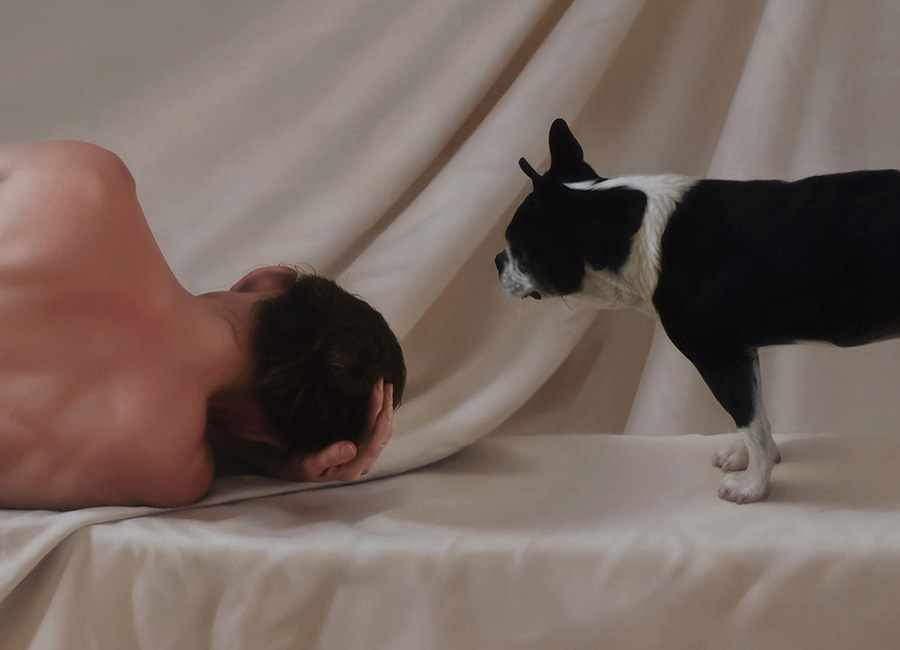
Could you dive into the symbolism conveyed by other elements in the paintings such as the brushes on the floor or even the ribbon tied to the woman’s waist?
I wanted to keep the painting simple but add just enough to tell the story. The ribbon around the waist is a nod to one of the first paintings I made, and is a reference to everything that has happened since and the path here. The brushes and whiskey bottle simply reflect things being set aside, both good and bad. My work. My coping mechanisms. Everything. And I included the orchid mantises because mantises are thought to symbolize patience, mindfulness, bravery, transformation, and luck (the last of which we both needed at the time), meditation, and contemplation. A reminder that stillness is a strength. And honestly, I just wanted Ella to have company on her way out.
The draping effect and the « bed » on which lay the woman, create a certain depth to this painting in a way that it seems anchored in its environment. Did you seek to make this painting feel like it was a part of any room it would be exhibited in?
Not necessarily. I generally want my paintings to feel like you are sort of looking into a portal to an alternate reality, right within arms reach. Like a calmer, quieter world you might be able to walk into.


French author Guy de Maupassant said “the realist, if he is an artist, will seek, not to show us the banal photograph of life, but to give us a more complete, more striking, more convincing view of it than reality itself”… This seems to align with your own philosophy as an artist who « is interested in exploring the complexities of human experiences »… Would you agree?
Definitely, I love that. I feel like nuance, emotional complexity, wonder, and sacredness (for lack of a better word) sometimes get lost in the noise of representing everything that might exist in the most exact detail. Experiencing and noticing all these things and seeing past what’s on the surface requires focus and the best way I’ve found to do that is to simplify. I don’t know how to talk about duality, identity, or fear and longing, and an inner life in an image that’s simply a replica of the real world. Other people might be able to do that wonderfully, but that’s not the way I know how to find the truth in things.
Do you have any other elements that you want to share with us regarding this painting? Any upcoming exhibitions?
I really don’t have much lined up this year, actually. I‘m just working on commissions and mini paintings right now and generally pulling back from the perpetual gallery schedule. I am starting to think about wanting to put together a larger body of work for a solo show again but not sure when or where that would happen. Mostly I’m just trying to remind myself that I do my best work when I don’t think anybody is looking and if I do that the people who love it will find me, even if I’m not participating in lots of shows. And that seems best.
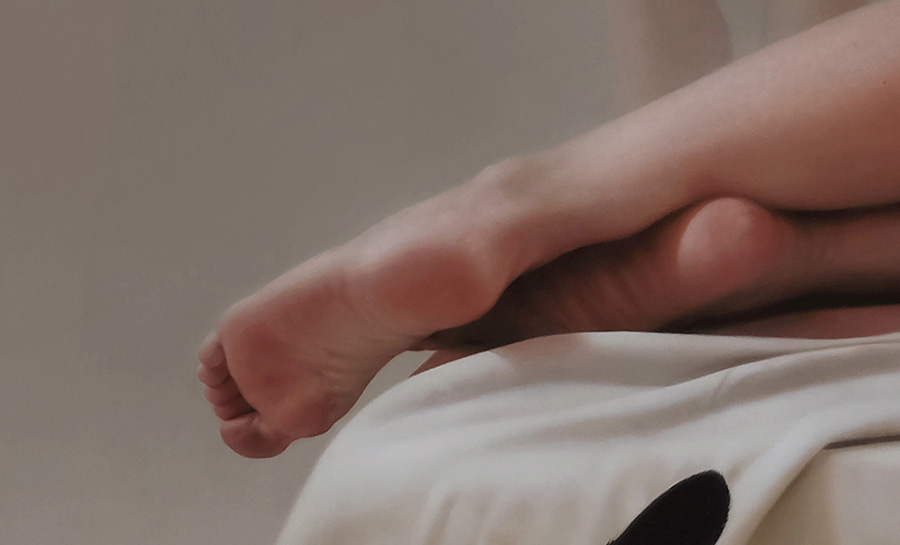
Megan Read Social Media Accounts
Website | Instagram | Facebook


